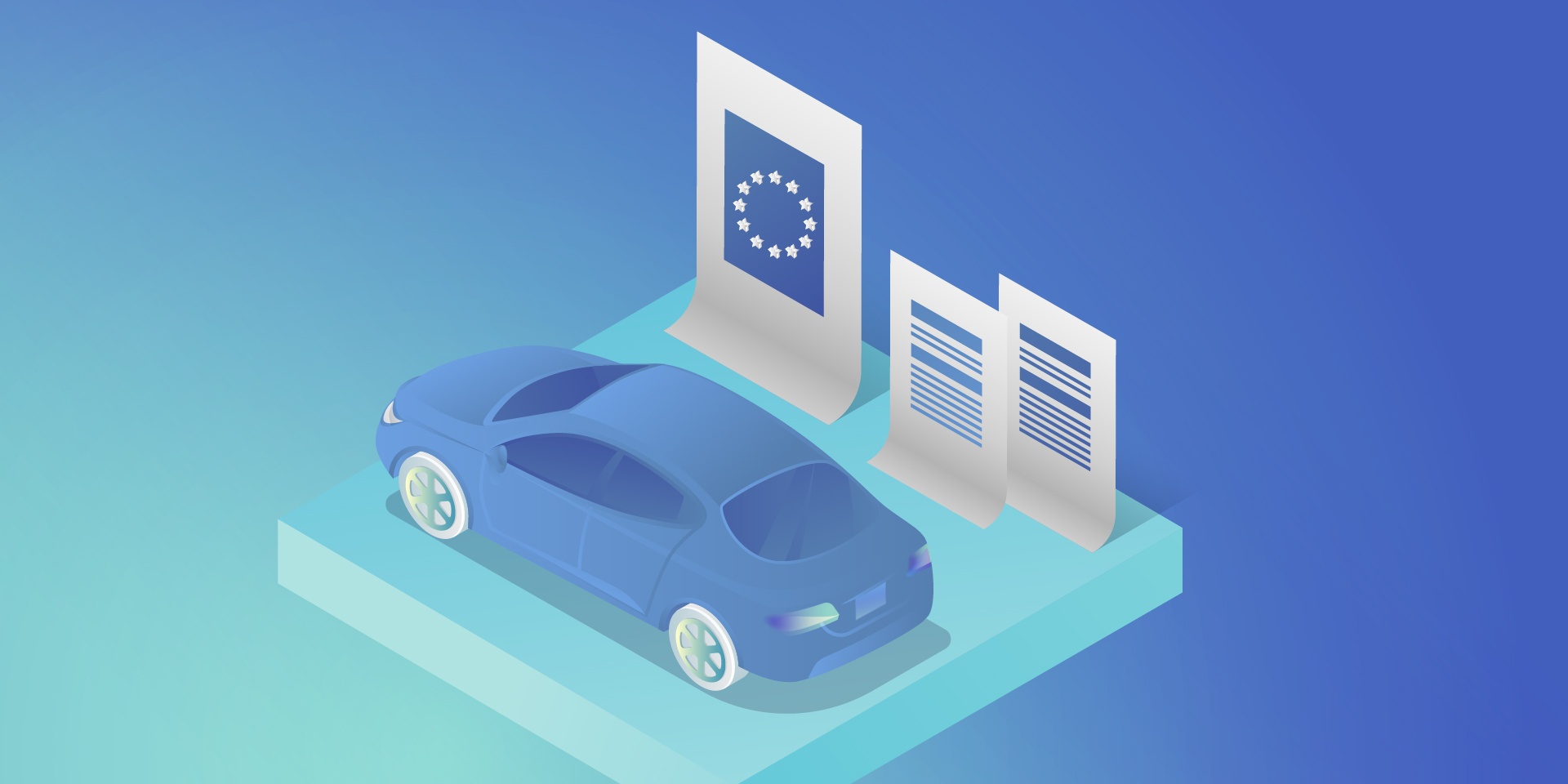Unveiling the EU Data Act: Automotive Industry Implications

Fasten your seatbelts! The EU Data Act aims to drive a paradigm shift in the digital economy, and the automotive industry is about to experience a high-octane transformation. Get ready to explore the user-centric approach, new data-sharing mechanisms, and the roadmap for OEMs to adapt and thrive in the European data market. Are you prepared for this journey?
Key Takeaways
- The EU Data Act grants users ownership and control of their data while introducing obligations for automotive OEMs to ensure fair competition.
- The Act facilitates data sharing between users, enterprises, and public sector bodies to promote innovation in the European automotive industry.
- Automotive OEMs must invest in resources and technologies to comply with the EU Data Act regulations for optimal growth opportunities.
The EU Data Act and Its Impact on the Automotive Industry
The EU Data Act applies to manufacturers, suppliers, and users of products or services placed on the market in the EU, as well as data holders and recipients based in the EU.
What is the EU Data Act regulation?
The EU Data Act is a proposed regulation that seeks to harmonize rules on fair access to and use of data in the European Union. The regulation sets out clear guidelines on who is obliged to surrender data, who can access it, how it can be used, and for what specific purposes it can be utilized.
In June 2023, the European Union took a significant step towards finalizing the Data Act, marking a pivotal moment in data governance. While the Act awaits formal adoption by the Council and Parliament following a legal-linguistic revision, the recent informal political agreement suggests its inevitability. This groundbreaking regulation will accelerate the monetization of industrial data while ensuring a harmonized playing field across the European Union.
User-centric approach
The European Data Act is revving up the engines of change in the automotive sector, putting users in the driver’s seat of their data and imposing specific obligations on OEMs. This means that connected products and related services must provide users with direct access to data generated in-vehicle, without any additional costs, and in a secure, structured, and machine-readable format.
Data handling by OEMs
A significant change is about to happen in data practices, particularly for OEMs operating in the automotive industry. Manufacturers and designers of smart products, such as smart cars, will be required to share data with users and authorized third parties. This shared data includes a wide range of information:
Included in the Sharing Obligation: The data collected during the user’s interaction with the smart car that includes information about the car’s operation and environment. This information is gathered from onboard applications such as GPS and sensor images, hardware status indications, as well as data generated during times of inaction by the user, such as when the car is on standby or switched off. Both raw and pre-processed data are collected and analyzed.
Excluded from the Sharing Obligation: Insights derived from raw data, any data produced when the user engages in activities like content recording or transmitting, and any data from products designed to be non-retrievable are not shared.
Sharing mechanisms and interactions
Data holders must make vehicle-generated data available (including associated metadata) promptly, without charge, and in a structured, commonly used, machine-readable format.
The legal basis for sharing personal data with connected vehicle users and legal entities or data recipients other than the user varies depending on the data subject and the sector-specific legislation to be presented.
Data Access and Third-Party Services
The Data Act identifies eligible entities for data sharing, encompassing both physical persons, such as individual vehicle owners or lessees, and legal persons, like organizations operating fleets of vehicles.
Requesting data sharing
Data can be accessed by users who are recipients either directly from the device’s storage or from a remote server that captures the data. In cases where the data cannot be accessed directly, the manufacturers must promptly provide it.
The data must be free, straightforward, secure, and formatted for machine readability, and its quality should be maintained where necessary. There may be contracts that limit or deny access or further distribution of data if it breaches legal security requirements. This is a critical aspect for smart cars where sharing data might pose a risk to personal safety.
If the recipient of data is a third party, they cannot use the data to create competing products, only for maintenance. They cannot share the data unless it is for providing a user service and cannot prevent users who are consumers from sharing it with other parties.
Fair competition and trade secrets
The Data Act mandates that manufacturers share data, even when it is protected by trade secret laws. However, safeguards exist, allowing OEMs to impose confidentiality obligations and withhold data sharing in specific circumstances. These provisions ensure a balance between data access and trade secret protection. During the final negotiations on the Data Act, safeguarding trade secrets was a primary focus.
The Data Act now has provisions to prevent potential abusive behavior by data holders. It also includes an exception to data-sharing that permits manufacturers to reject certain data access requests if they can prove that such access would result in the disclosure of trade secrets, leading to severe and irreversible economic losses.
Connected vehicle data
Connected vehicle data takes the spotlight under the EU Data Act, empowering users with real-time access to their data and enabling data sharing with repair or service providers.
The implementation of the Data Act heavily involves connected cars. As per the Act, users, including companies, have the right to access the data collected by vehicles. However, manufacturers have the option to limit access under exceptional circumstances. This has a significant impact on data collection practices in the automotive sector.
Preparing for the EU Data Act: A Guide for Automotive OEMs
To stay ahead of the curve, OEMs must understand the business implications of the Data Act, adapt to new regulations, and invest in the necessary resources and technologies to ensure compliance.
As connected vehicles become the norm, OEMs that embrace the Data Act will be well-positioned to capitalize on new opportunities and drive growth in the European automotive sector.
Business implications
The EU Data Act imposes significant business implications on automotive OEMs, necessitating changes in their data handling practices and adherence to new obligations. As the industry embraces the user-centric approach to data handling, OEMs must design connected products and related services that provide users with access to their in-vehicle data.
To ensure a smooth transition and maintain a competitive edge, automotive OEMs must undertake a tailored and strategic preparation process.
Adapting to new regulations
Failure to comply with the Data Act could result in legal and financial repercussions for automotive OEMs. In order to avoid any possible problems, they should invest in the necessary resources and technologies to ensure compliance with the regulations of the Data Act.
They should also engage proactively with the requirements of the Data Act and implement compliance measures strategically.
By taking the following steps, automotive OEMs can navigate the regulatory landscape effectively and seize growth opportunities in the European automotive sector:
In-Depth Knowledge: Dive deep into the EU Data Act, with a special focus on its impact on the automotive industry. Recognize that the automotive sector is central to this regulation, requiring industry-specific understanding.
Data Segmentation: Perform a comprehensive analysis of your data, categorizing it into distinct groups. Identify which data types fall within the purview of the EU Data Act.
Compliance Framework Development:
- Internal Compliance: Audit and update policies to comply with the EU Data Act. Develop a data governance framework for access, sharing, and privacy.
- Data Access Protocols: Establish unambiguous protocols for data access and sharing, including procedures for obtaining user consent, data retrieval, and sharing modalities.
Data Privacy and Security:
- Data Safeguards: Enhance data privacy and security, including encryption and access controls.
Data Utilization: Develop plans for leveraging this data to generate new revenue streams while adhering to the EU Data Act’s mandates.
User Engagement and Consent:
- Transparency: Forge clear and transparent channels of communication with users. Keep users informed about data collection, sharing, and usage practices, and obtain well-informed consent.
- Consent Management: Implement robust consent management systems to efficiently monitor and administer user consent. Ensure that users maintain control over their data.
Legal Advisors: Engage legal experts well-versed in data protection and privacy laws, particularly those relevant to the automotive sector. Seek guidance for interpreting and implementing the EU Data Act within your specific industry context.
Data Access Enhancement: Invest in technology infrastructure to facilitate data access and sharing as per the EU Data Act’s stipulations. Ensure that data can be easily and securely provided in the required format.
Employee Education: Educate your workforce on the intricacies of the EU Data Act and its implications for daily operations. Ensure that employees possess a strong understanding of data protection principles.
Ongoing Compliance Oversight: Establish mechanisms for continuous compliance monitoring. Regularly assess data practices, consent management systems, and data security protocols to identify and address compliance gaps.
Collaboration with Peers: Collaborate closely with industry associations, fellow automotive OEMs, and stakeholders to share insights, best practices, and strategies for addressing the specific challenges posed by the EU Data Act in the automotive sector.
Future-Ready Solutions: Develop adaptable and scalable solutions that accommodate potential regulatory landscape shifts. Remain agile and prepared to adjust strategies as needed.
Boosting innovation capabilities
The Data Act may bring some challenges, but it also creates a favorable environment for innovation. By making industrial data more accessible, the Act offers a huge potential for data-driven businesses to explore innovative business models. Adapting to the Act can improve a company’s ability to innovate, allowing it to use data as a strategic asset for growth and differentiation.
Summary
The EU Data Act is driving a paradigm shift in the automotive sector, putting users in control of their data and revolutionizing the way OEMs handle, share, and access vehicle-generated data. As the industry speeds towards a future of connected vehicles and data-driven services, automotive OEMs must adapt to new regulations and prepare for the implementation of the Data Act.
By embracing the user-centric approach, ensuring compliance with data sharing and processing provisions, and investing in innovation capabilities, OEMs can unlock new opportunities and drive growth in the European automotive market. Are you ready to hit the accelerator and embrace the EU Data Act?
Data-Centric Approach: How Data is Steering the Automotive Revolution
Download the ebook and navigate your company to get the most out of collected data
Download ebook
Check related articles
Read our blog and stay informed about the industry's latest trends and solutions.
see all articles

How to Monetize Vehicle Data Thanks to In-car Technologies – The Biggest Challenges and Control Points of the Process – Part 1
Read the article





